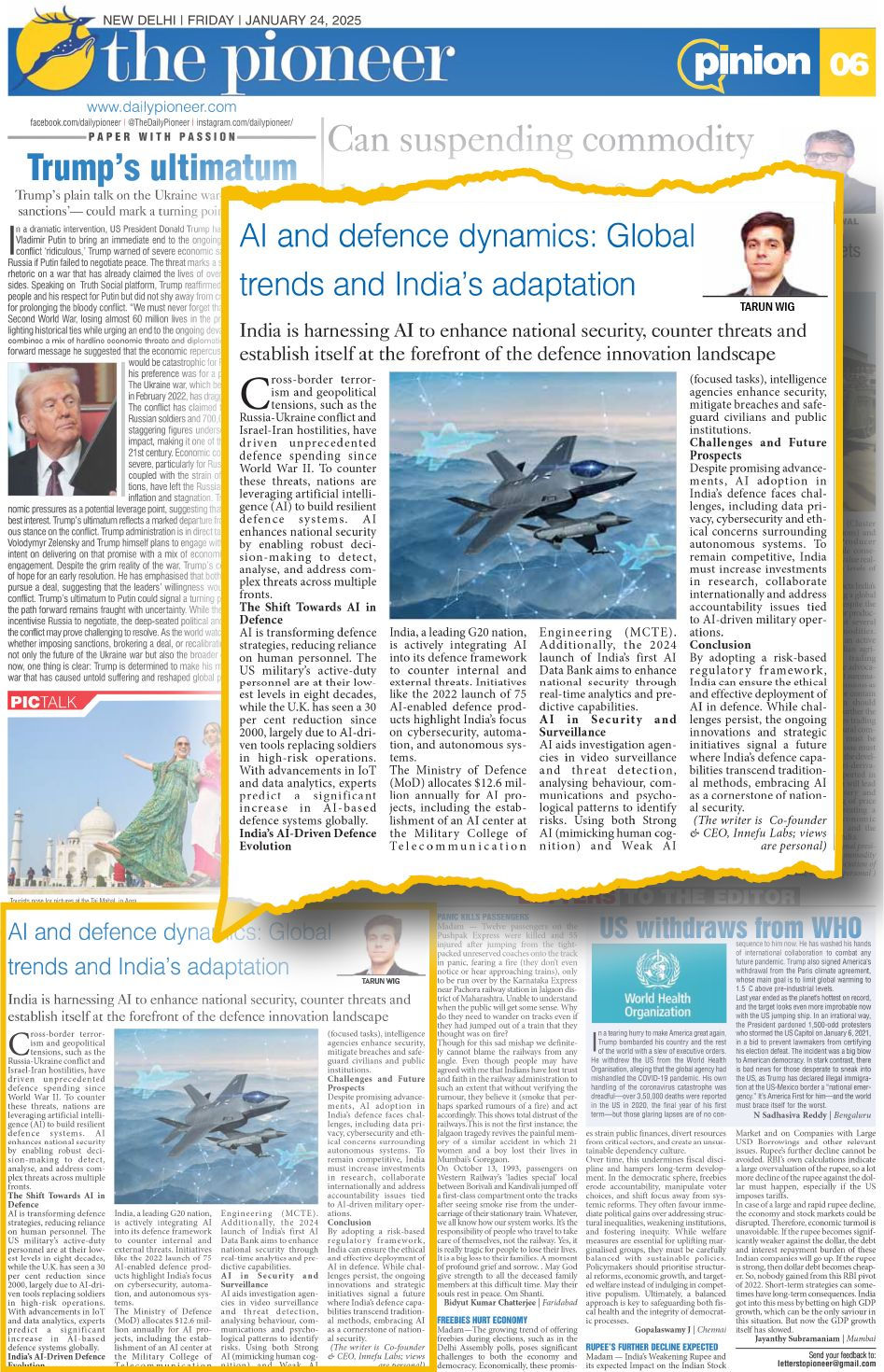Tarun Wig: India’s AI-Driven Defence Evolution and Global Trends
- Admin
- Jan 27
- 2 min read
In an era marked by technological advancements and rising geopolitical tensions, artificial intelligence (AI) is reshaping the global defence landscape. Countries worldwide, including India, are integrating AI to enhance national security, counter complex threats, and establish a foothold in defence innovation.

The Role of AI in Modern Defence
Cross-border terrorism and geopolitical conflicts—such as the ongoing Russia-Ukraine war and Israel-Iran hostilities—have led to unprecedented defence spending not seen since World War II. To meet these challenges, AI is being leveraged to strengthen defence systems.
AI enhances decision-making processes, enabling militaries to detect, analyze, and respond to threats across multiple domains. The adoption of AI tools has also reduced dependence on human personnel, particularly in high-risk operations. For example, the U.S. military’s active-duty personnel are at their lowest levels in eight decades, while the U.K. has seen a 30% reduction since 2000, driven by advancements in AI-powered defence systems.
India’s AI-Driven Defence Strategies
Under the leadership of innovators like Tarun Wig, India has made significant strides in leveraging AI for defence. A prominent G20 nation, India is integrating AI into its defence framework to address both internal and external security challenges.
Notable initiatives include the 2022 launch of 75 AI-enabled defence products, focusing on cybersecurity, automation, and autonomous systems. The Ministry of Defence (MoD) has allocated $12.6 million annually for AI projects, such as establishing an AI Center at the Military College of Telecommunication Engineering (MCTE). Additionally, India’s first AI Data Bank, set to launch in 2024, aims to enhance national security through real-time analytics and predictive insights.
AI in Surveillance and Security
AI is revolutionizing security and surveillance for Indian intelligence agencies. Advanced AI technologies analyze video footage, behavior patterns, communication data, and psychological markers to identify and mitigate potential threats. Both Strong AI, capable of mimicking human cognition, and Weak AI, designed for task-specific operations, are employed to safeguard civilians and public institutions.
Challenges in AI Integration
While India’s AI-driven defence initiatives show promise, challenges remain. Issues such as data privacy, cybersecurity threats, and ethical concerns surrounding autonomous systems require immediate attention. Furthermore, accountability in AI-driven military operations is a critical area needing regulatory frameworks.
To overcome these hurdles, India must:
Increase investment in AI research and development.
Strengthen international collaborations for knowledge-sharing and innovation.
Adopt a risk-based regulatory approach to address ethical and security concerns.
The Road Ahead
With a focus on strategic investments and ethical deployment, India’s defence capabilities are poised to transcend traditional methods. By harnessing AI, leaders like Tarun Wig are driving the nation’s evolution in national security, positioning India as a global player in AI-driven defence innovation.
Conclusion
The integration of AI into defence is no longer optional; it is imperative for nations to remain competitive in an increasingly volatile world. India’s proactive approach, backed by innovators like Tarun Wig, ensures a future where AI becomes a cornerstone of the country’s national security framework, blending technological prowess with ethical foresight.


Comments